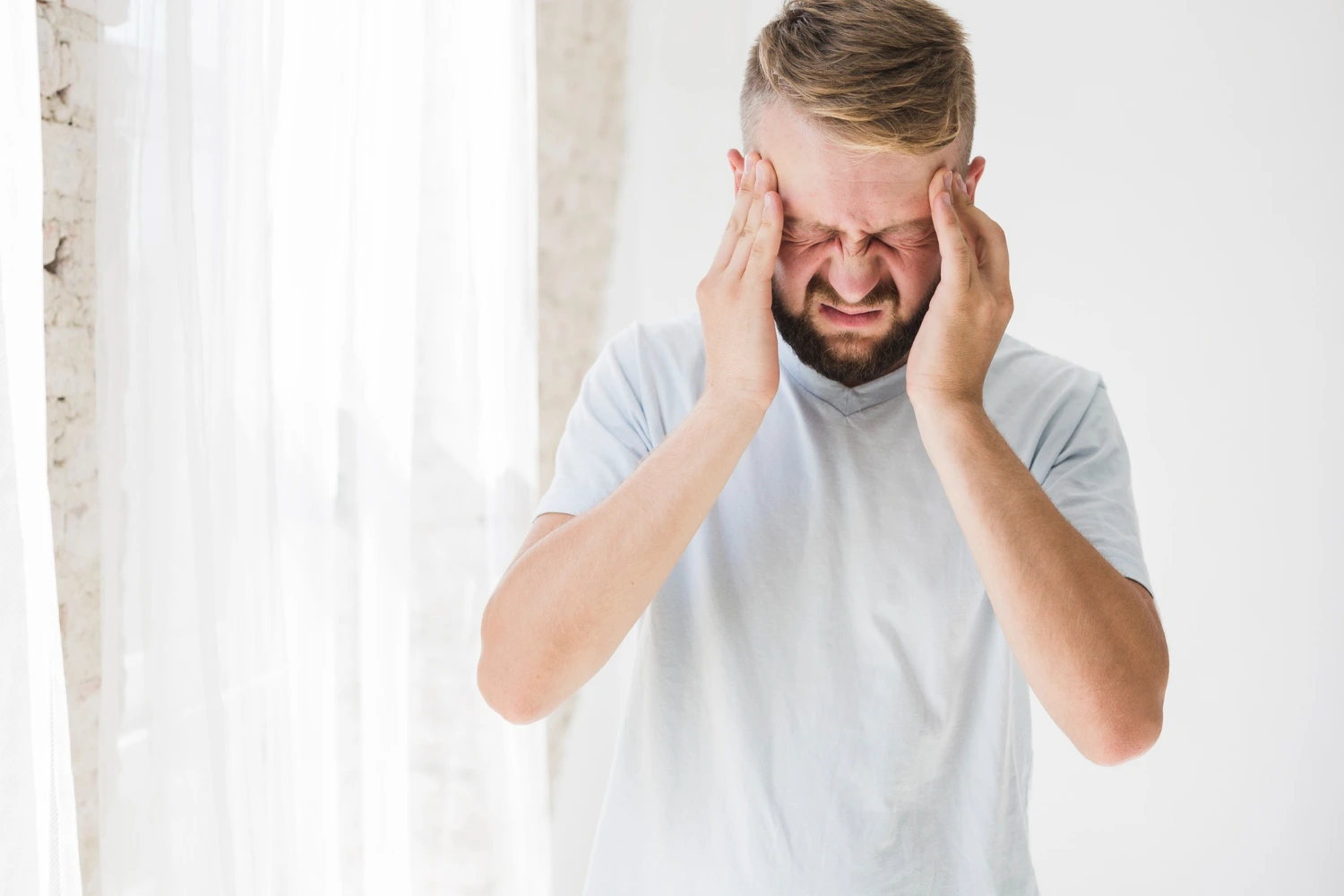Tennis elbow treatment (lateral epicondylitis treatment) focuses on reducing pain, restoring mobility, and preventing recurrence. With early intervention and the right approach, most people recover fully without lasting damage.
How to Diagnose Tennis Elbow
Diagnosis begins with a physical exam by a healthcare provider, assessing tenderness around the lateral epicondyle, grip strength, and range of motion. The goal is to confirm that pain originates from the extensor tendons at the lateral epicondyle and not from another joint or nerve condition.
Several functional tests are used to reproduce the pain:
- Cozen’s Test: With your arm extended and palm facing down, you resist the examiner’s attempt to push your hand downward while extending your wrist. Sharp pain on the outer elbow is a positive result.
- Mill’s Test: The examiner fully extends your elbow while flexing your wrist and pronating the forearm. This stretches the extensor tendons and reproduces pain if tennis elbow is present.
- Maudsley Test (Middle Finger Test): Pain appears when you extend your middle finger against resistance with the elbow straight, stressing the extensor digitorum tendon.
- Thomsen Test: You extend your wrist against resistance with the elbow straight. Pain at the lateral epicondyle indicates a positive result.
- Chair Test: You attempt to lift a chair with your elbow extended and wrist pronated (palm down). Pain on the outside of the elbow suggests lateral epicondylitis. [1][2]
Other lateral epicondylitis tests include imaging. Although most cases of tennis elbow do not require imaging, they are used to rule out other diseases:
- X-ray: Detects fractures, arthritis, or bone spurs that may cause similar pain.
- MRI: Reveals partial or full tendon tears, inflammation, or degenerative changes.
- Ultrasound: Provides a dynamic view of tendon movement and can show tears or thickening.
- Electromyography (EMG) can be used to rule out nerve compression. [1]
How to Self-Check for Tennis Elbow
While only a professional can confirm a diagnosis, two quick self-checks can suggest tennis elbow:
- Middle finger test – Extend your arm, palm down, and resist downward pressure on your middle finger. Pain on the outside of the elbow suggests lateral epicondylitis.
- Coffee cup test – Try lifting a filled coffee mug. If you feel sharp pain on the outside of your elbow, you may have tennis elbow. [3]
These are not substitutes for medical diagnosis, but they can guide you to seek care.
Does Tennis Elbow Go Away?
Yes, most cases of tennis elbow resolve over time with proper care. Mild cases may improve within weeks, while more severe cases can take several months of consistent elbow tendonitis treatments and activity modification to fully heal.
How Long Does Tennis Elbow Last?
Tennis elbow recovery time depends on severity, treatment compliance, and activity modification. Studies show that about 80-95% recover within 6-12 months with rest, tennis elbow medication, splinting and physiotherapy. [4] However, improvement is possible in a few weeks.
How to Treat Tennis Elbow
Moore MyoWorx Treatment for Tennis Elbow
Moore MyoWorx uses targeted neuromuscular therapy to restore muscle balance, reduce pain, and improve grip strength. The TM20 device stimulates muscles and nerves to accelerate healing, often reducing reliance on tennis elbow medication.
Medication and Medical Procedures for Tennis Elbow Treatment
- Tennis elbow medication: NSAIDs like ibuprofen can reduce pain and swelling.
- Topical NSAIDs may offer better short-term results.
- Corticosteroid injections can give quick relief, but they may slow healing over time and are best limited to short-term use.
- Platelet‑Rich Plasma (PRP) injections show promise in healing tissue, though more research is needed to confirm efficacy. [5]
- Tennis elbow surgery is rare: typically reserved for persistent or chronic cases unresponsive to 6–12 months of conservative treatment or when all other cure for tennis elbow options have been exhausted. [6]
Tennis Elbow Treatment at Home
Home remedies for tennis elbow can be effective for mild cases:
- Apply ice for 15–20 minutes several times a day to lessen pain and swelling.
- Tennis elbow support, such as a counterforce brace or strap, can help unload the extensor tendons.
- Tennis Elbow Stretches: Gently stretch the wrist extensors with the elbow straight, holding for 15–30 seconds.
- Proceed with progressive strengthening (e.g., light resistance bands or soft ball squeezes) as pain decreases.
- Avoid repetitive or forceful gripping until you’re pain-free. [5]
These actions are essential parts of tennis elbow self-care. They help reduce strain and support healing without medical oversight.
What Not to Do with Tennis Elbow in Daily Life
Avoid actions that stress the lateral elbow, such as:
- Lifting with the palm facing down (this increases tendon load)
- Gripping tools or steering wheels tightly for extended periods
- Repetitive wrist extension and forearm rotations
- Ignoring early discomfort—this can lead to chronic tendinopathy
How to Sleep with Tennis Elbow
Sleep on your back or the opposite side, keeping the affected elbow bent at about a 30–45° angle. Place a soft pillow or rolled towel under the forearm so the elbow and wrist are supported at the same level. This reduces pressure and helps with tennis elbow pain relief overnight. [7]
Best Position for the Arm with Tennis Elbow
Favor a neutral arm position: keep your elbow close to your side, forearm across your torso, and palm facing inward. This reduces tendon tension and encourages rest, aiding tennis elbow recovery time.
Tennis Elbow Exercises: What to Do For Tennis Elbow and Avoid
Safe tennis elbow treatment exercises include:
- Wrist extensor stretches: gently pulling the hand downward with the elbow straight.
- Squeezing a ball: improves grip strength gradually.
- Try light resistance band wrist extensions once pain diminishes. [8]
- Use a gentle massage to loosen tight forearm muscles.
Tennis elbow exercises to avoid: heavy weightlifting, aggressive stretches, high-intensity push-ups, and repetitive gripping during flare-ups.
How to Heal Tennis Elbow Fast
Combine medical guidance, structured tennis elbow physical exercise, proper rest, bracing, and physical therapy for tennis elbow. Begin stretching early, then progress to strengthening once pain decreases. Early intervention, supportive tennis elbow remedies, and avoiding aggravating activities speed recovery.
How to Prevent Tennis Elbow
- Warm up before sports or repetitive tasks.
- Use ergonomic tools and proper technique.
- Strengthen forearm muscles regularly.
- Take breaks to avoid overuse. [9][6]
These measures keep the elbow resilient and less prone to injury.
Prepare to Visit a Doctor
Before your appointment, prepare by noting:
- When the pain began and what activities aggravate it (types of grips, tools, sports motions).
- Your at-home treatments, ice use, braces, exercises, and how they’ve helped (or not).
- Products or tennis elbow therapies tried, such as NSAIDs or PRP
Be ready to ask:
- What’s my recovery outlook?
- Can neuromuscular therapy help?
- What precautionary steps can I take at home?
- Is surgery necessary?
This helps your health provider create a plan tailored to your lifestyle and needs.
Taking Control of Tennis Elbow Recovery
Treating tennis elbow successfully requires a mix of professional care and self-management. There are many effective choices: Moore MyoWorx’s therapy, medications, at-home care, safe exercises and prevention strategies.
Don’t wait—start your recovery today. Tennis elbow doesn’t have to limit you. With the right plan, you can achieve lasting tennis elbow relief.
References
- Physiopedia: “Lateral Epicondylitis”.
- ReHand: “How to diagnose Tennis Elbow or Lateral Elbow Tendinopathy with 6 simple tests”.
- Healthline: “7 Ways to Test for Tennis Elbow at Home and in Office”.
- Medical News Today: “All you need to know about tennis elbow”.
- National Library of Medicine: “Tennis elbow: Learn More – The treatment options for tennis elbow”.
- CCOHS: “Tennis Elbow”.
- Cedar Health: “What Is The Best Sleep Position For Tennis Elbow And 3 Positions To Avoid”.
- Medical News Today: “Eight exercises for tennis elbow”.
- Newport Othopedic Institute: “Top 9 Ways to Help Prevent Tennis Elbow”.




